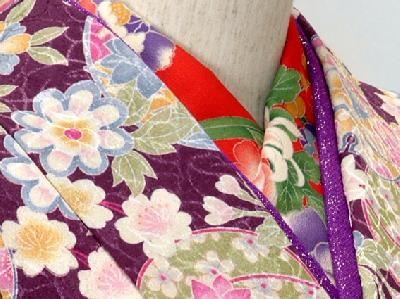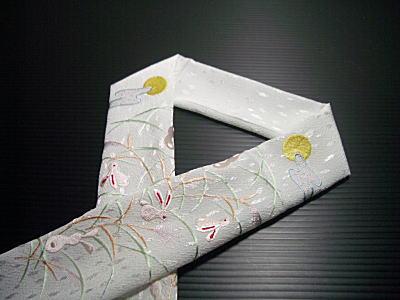半衿 Haneri Haneri
|
The haneri is a spare collar, which is sewed onto the collar base of nagajuban (the underwear for kimono). The origin of haneri dates back to the Azuchi-Momoyama period (1568-1598). As it was originally used for protecting the collars from getting dirty, most of haneri were black in color. However, in the Meiji period, it was thought fashionable to be particular about collars and the haneri with various colors, designs, dyeing techniques and even embroidery works were produced. There were even specialty shops for haneri in those days. The haneri is basically a 1 m long rectangular cloth. The white one is still used at formal occasions. As it is painstaking and expensive to wash kimono, people usually unsew only the haneri off the nagajuban and wash it. Today, various types of haneri are produced including Date-eri (double collars) and the one with embroidery, which are enjoyed in the combination with kimono. The haneri is also used as a scarf today.
- name
- Haneri














